
Ashley Cook
January 2, 2025
The Rust Belt region of the United States earned its reputation as a manufacturing powerhouse in the late-19th century, and carried that notoriety into the mid-20th century through momentous contributions to industry around the world. Midwestern and northeastern states became a destination for people of the Great Migration and European Immigration eras who sought prosperous futures as union workers in steel and automotive production. A description of the current landscape may include notes of railroads and factory buildings from the golden age of industrialization rusted out after decades of obsolescence. Corrosion has come to define this place that was once the center of the Industrial Revolution in the US, with its metals now tarnished by extreme neglect and its communities plagued by disinvestment. Detroit, Michigan and Pittsburgh, Pennsylvania flourished as engines of technical innovation in America before waves of economic abandonment left them jobless. Curator Kemuel Benyehudah’s newest exhibition Echoes from the Rust spotlights artists from these two cities, whose work touches on engineering, manual labor, and community as foundations of their blue-collar culture.
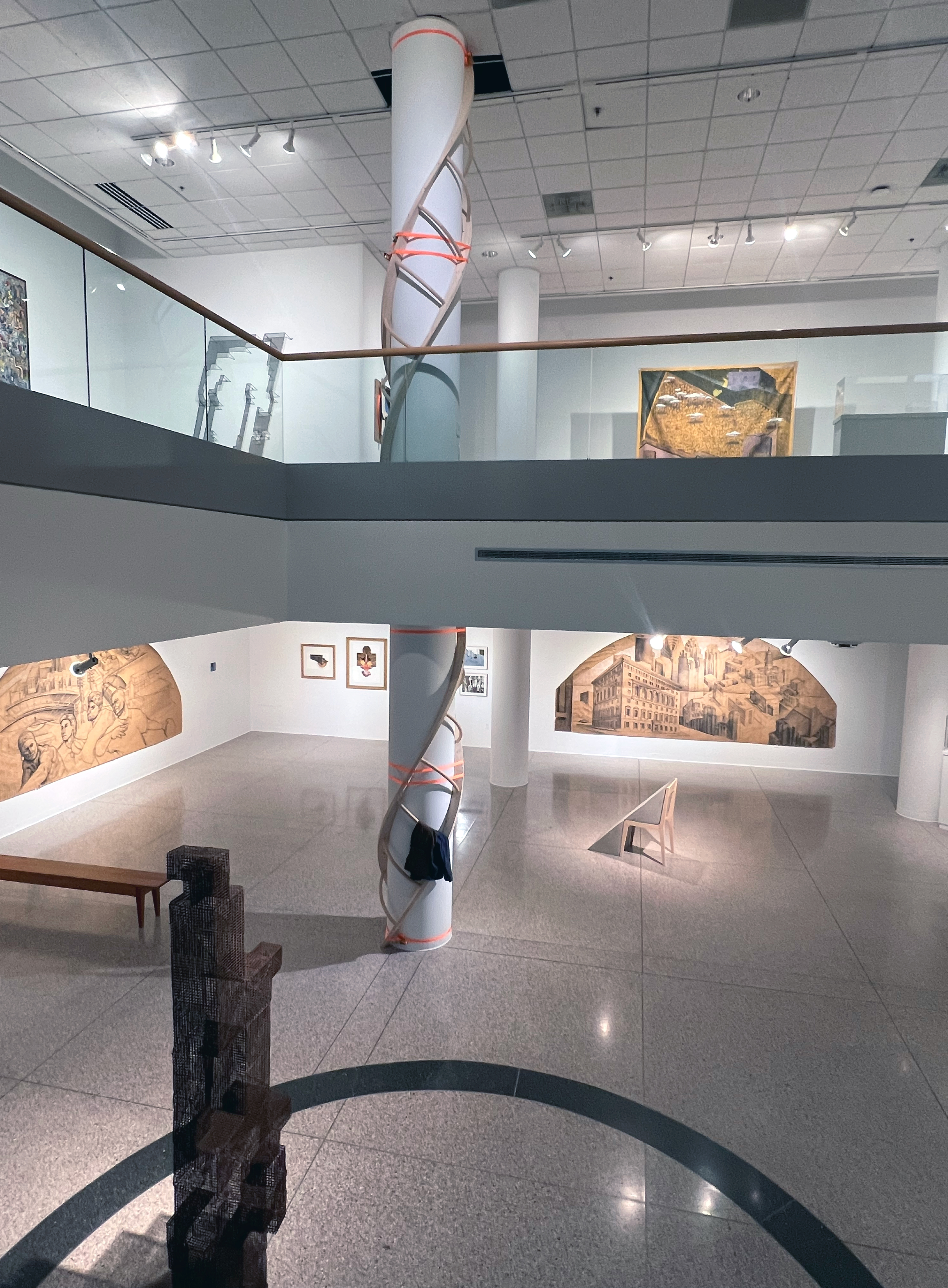
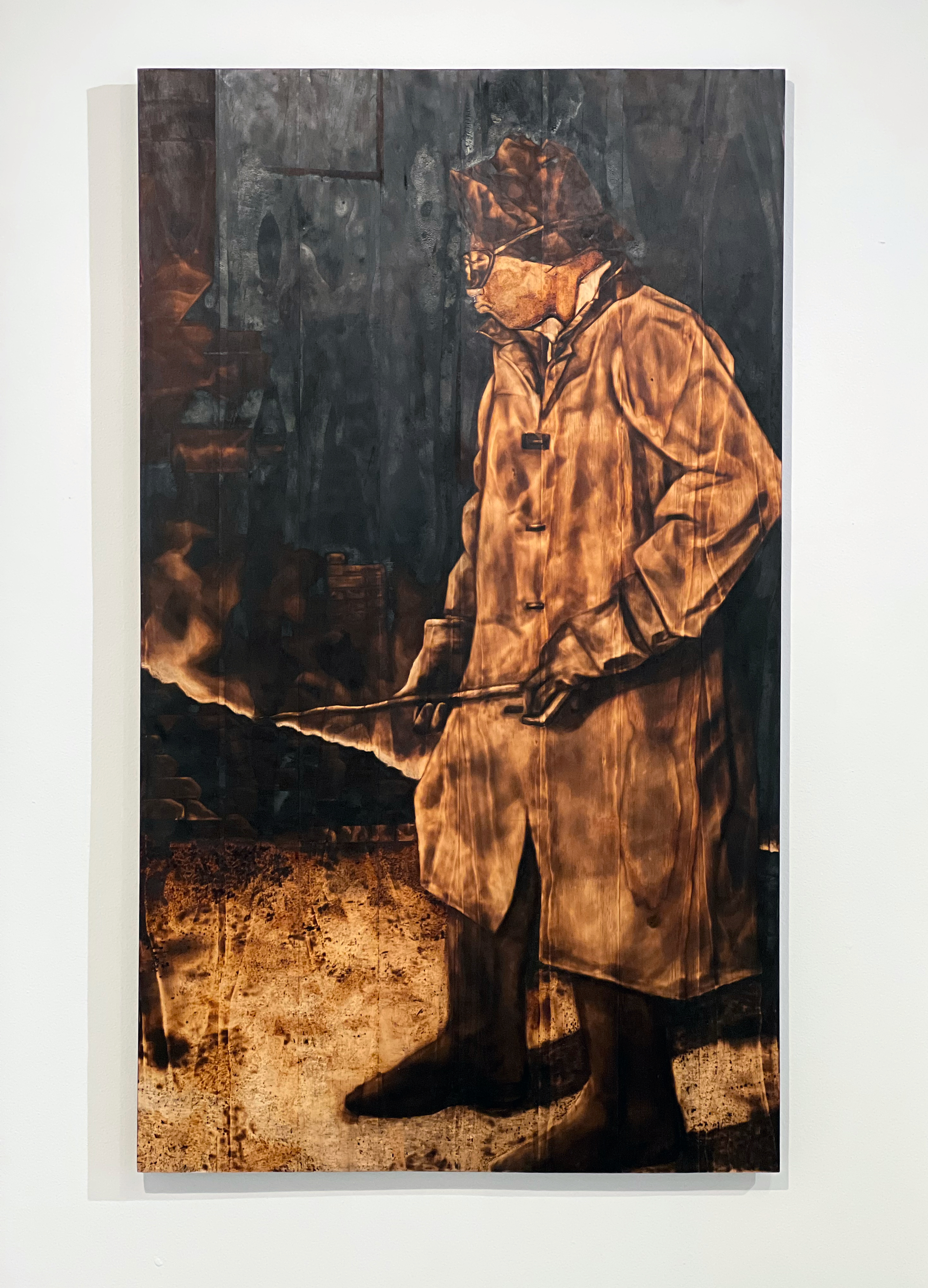
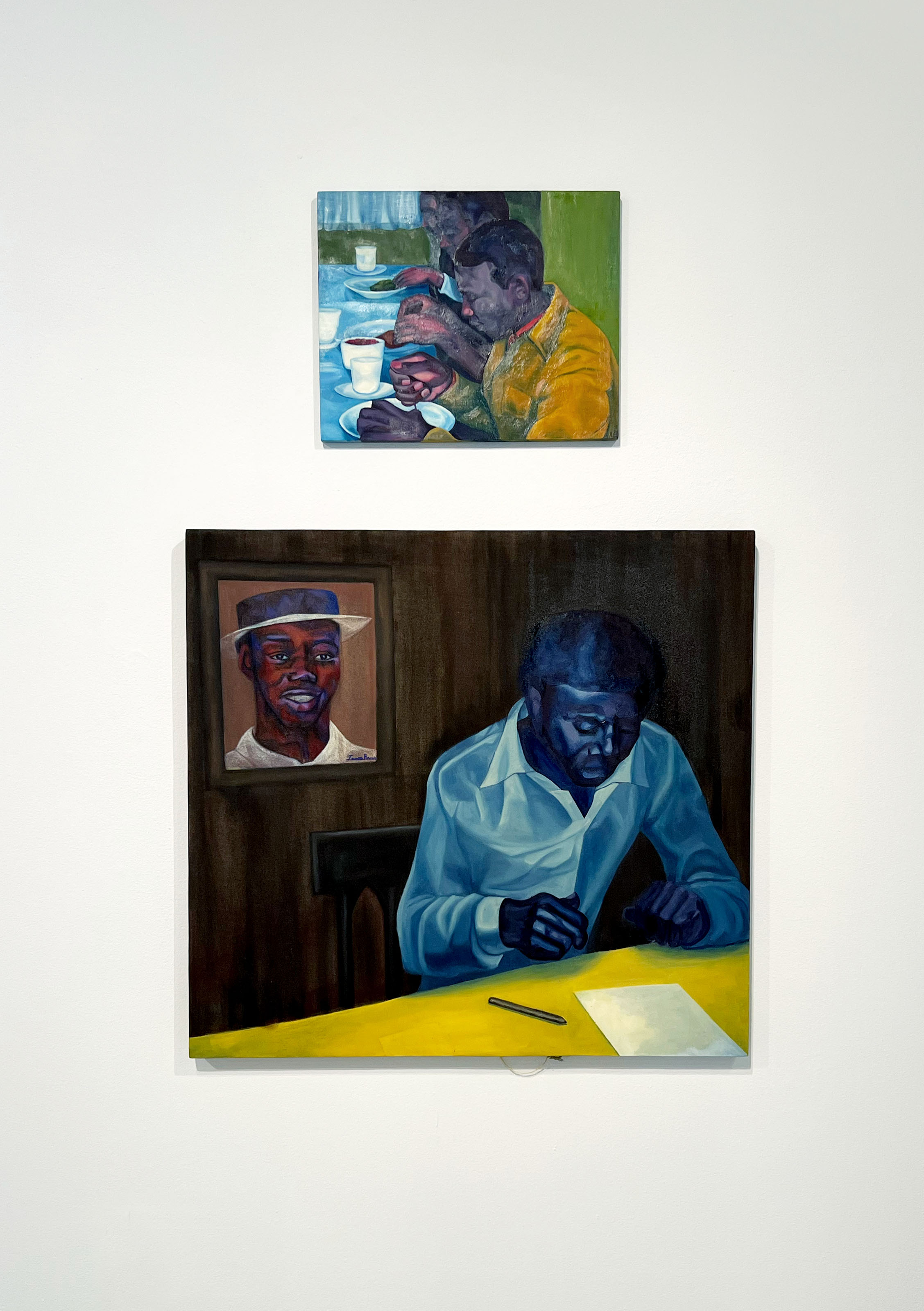
Nearly half a century after the process of deindustrialization hit the region, the Rust Belt continues to be a point in conversations surrounding the systemic devaluation of working-class people. The artists of the exhibition use their unique perspectives to raise awareness of the personhood behind mass production, restoring the dignity that may have been lost in cycles of exploitation and indifference. N.E. Brown work as a practicing artist and archivist making important interventions into Pittsburgh’s racial and labor histories has fueled her dive into the rich history of African American steelworkers in Pittsburgh. This investigation was inspired by her grandfather, who was a steel worker during the height of the economic boom in the midwest, and has since become a source from which she derives the subjects of her paintings. Brown’s wood-burned composition entitled The Mill offers a palpable perspective of a day in a factory, complemented by her corresponding paintings of other everyday life activities. The humble lifestyle of a factory worker is a shared experience that comes with being one of many who come together to create something extraordinary. Fresco muralist Hubert Massey’s Cityscape of Detroit serves as a reminder of society’s triumphs and the histories of the communities who made those accomplishments possible. In preparation for his mural at the Detroit Athletic Club in 1999, Massey utilized mathematical techniques often found in compositions by Diego Rivera and Jay Hembridge to present the city’s monumental architecture as a backdrop for white and Black athletes. Both Hubert Massey and N.E. Brown’s investments in uncovering and archiving lost histories have revealed countless challenges that people of color have faced on American soil. In Blue Collar by N.E. Brown, and Exporting and Importing of Knowledge by Hubert Massey, they employ portraiture as a way of honoring them as both humans and heroes.
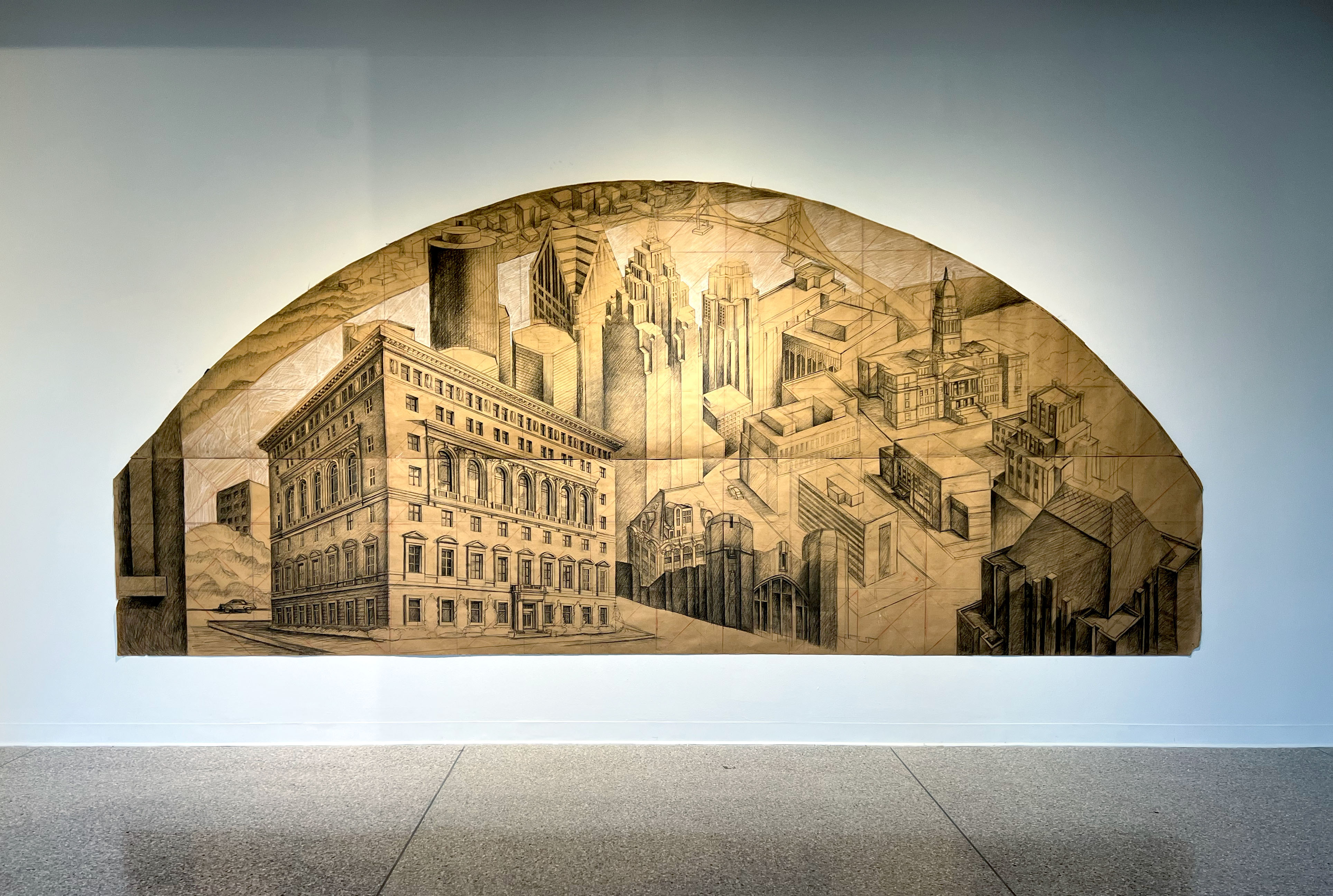
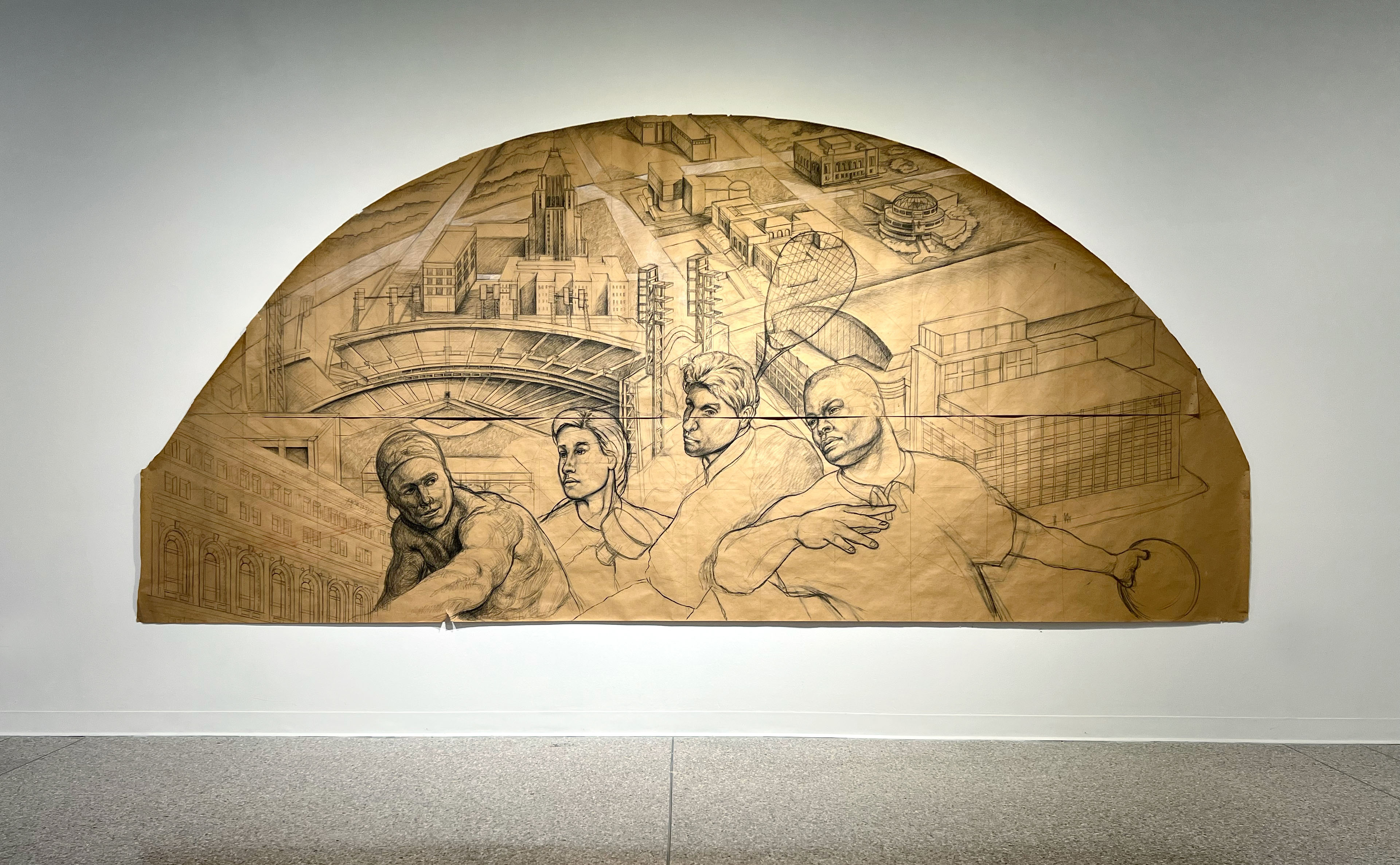
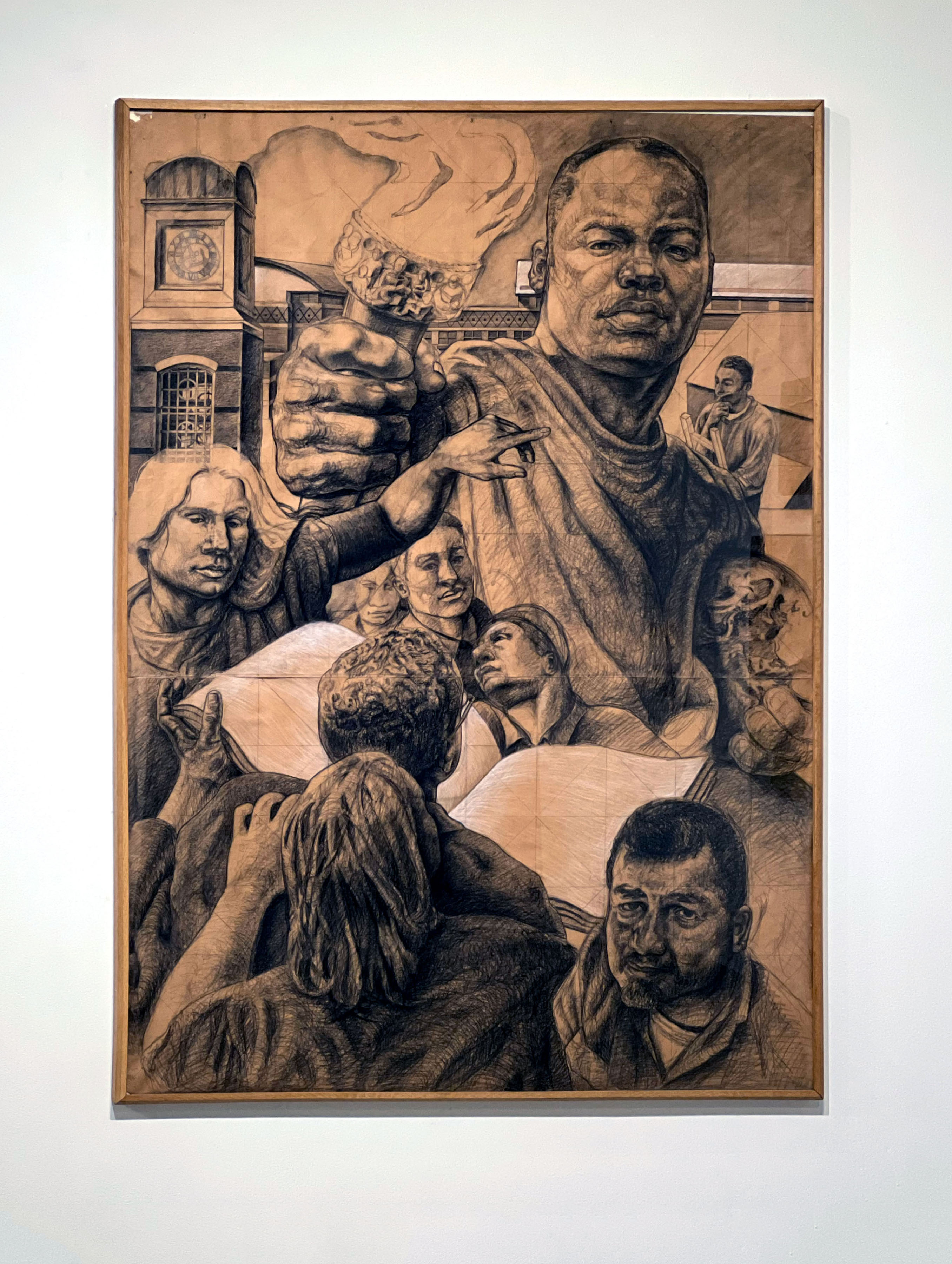
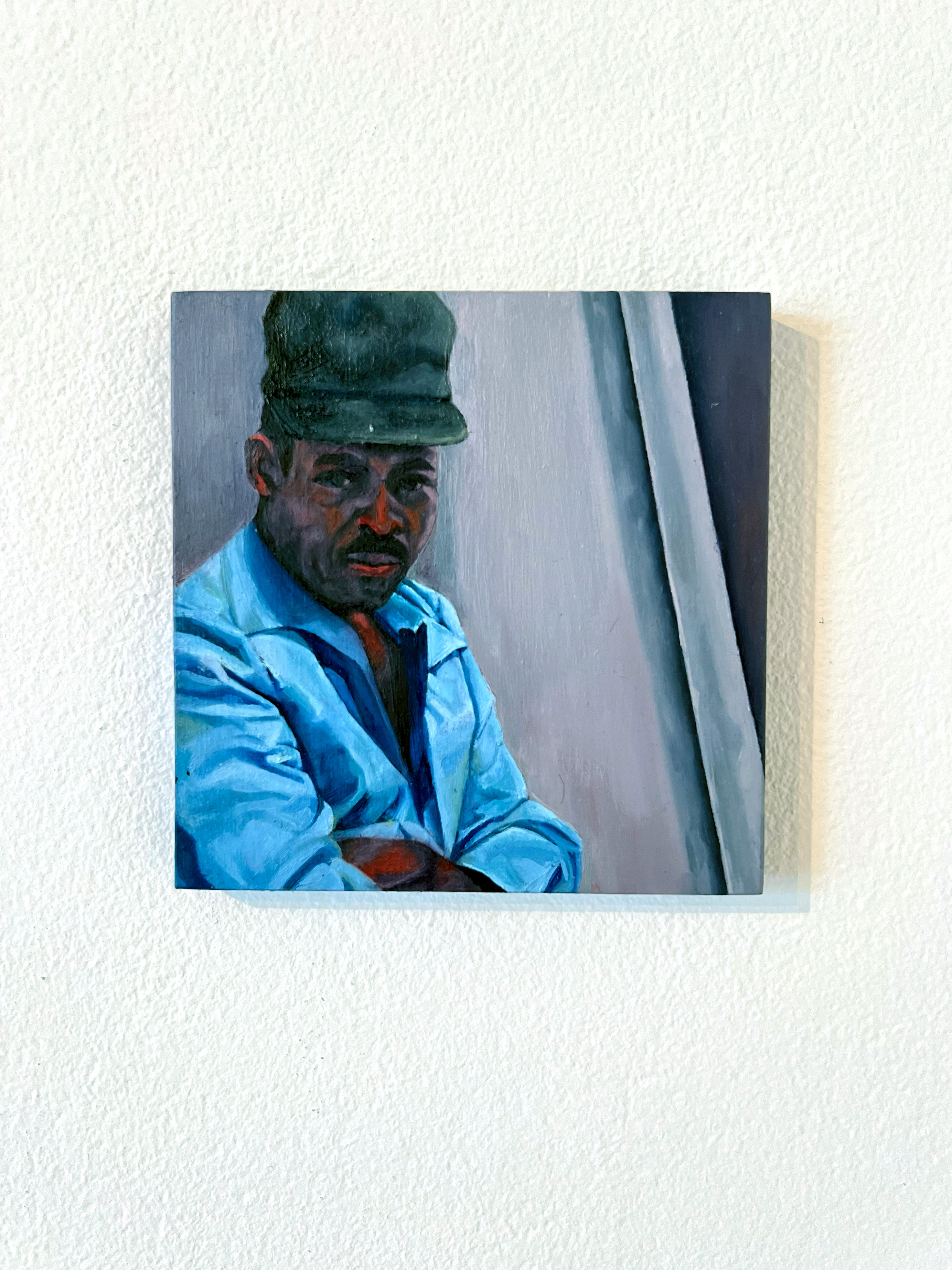
Diaspora is a common experience in the United States, where immigrants account for nearly 14% of the population.1 Adapting to a new home with alternate values and worldviews involves a level of negotiation between renunciation and preservation that can often compromise a person’s sense of identity. Adnan Charara is a Lebanese-American artist who contemplates themes of ethnicity, diversity, and belonging through his practice. His contribution to the exhibition not only touches on his own experience as a person living outside of their homeland, but also elicits contemplation of the challenges experienced by immigrant factory workers of early 20th century America. Archival black & white photographs of GM factory workers correspond with his own black & white screenprints, with forms and structures mirroring those found in the Detroit Industry Murals by Diego Rivera. His exploration of abstraction is represented in the duo Unconscious and Conscious, which, like Hubert Massey and N.E. Brown, points to psychology as an aspect of these laborers’ humanity. Abstraction is also explored in the work of Josh Challen Ice, who creates philosophical constructions using hyper-familiar forms and materials. His reinterpretation of the world around us engages in the process of unlearning potentially similar to the cultural adaptation required by Charara. Each of his works in the show challenge the concept of material hierarchy, with clamps, screws, and ratchet straps being equally as important as their carefully sculpted counterparts. Perhaps it is suggestive of corporate hierarchies and the essential, yet often overlooked, contribution of the blue-collar worker.
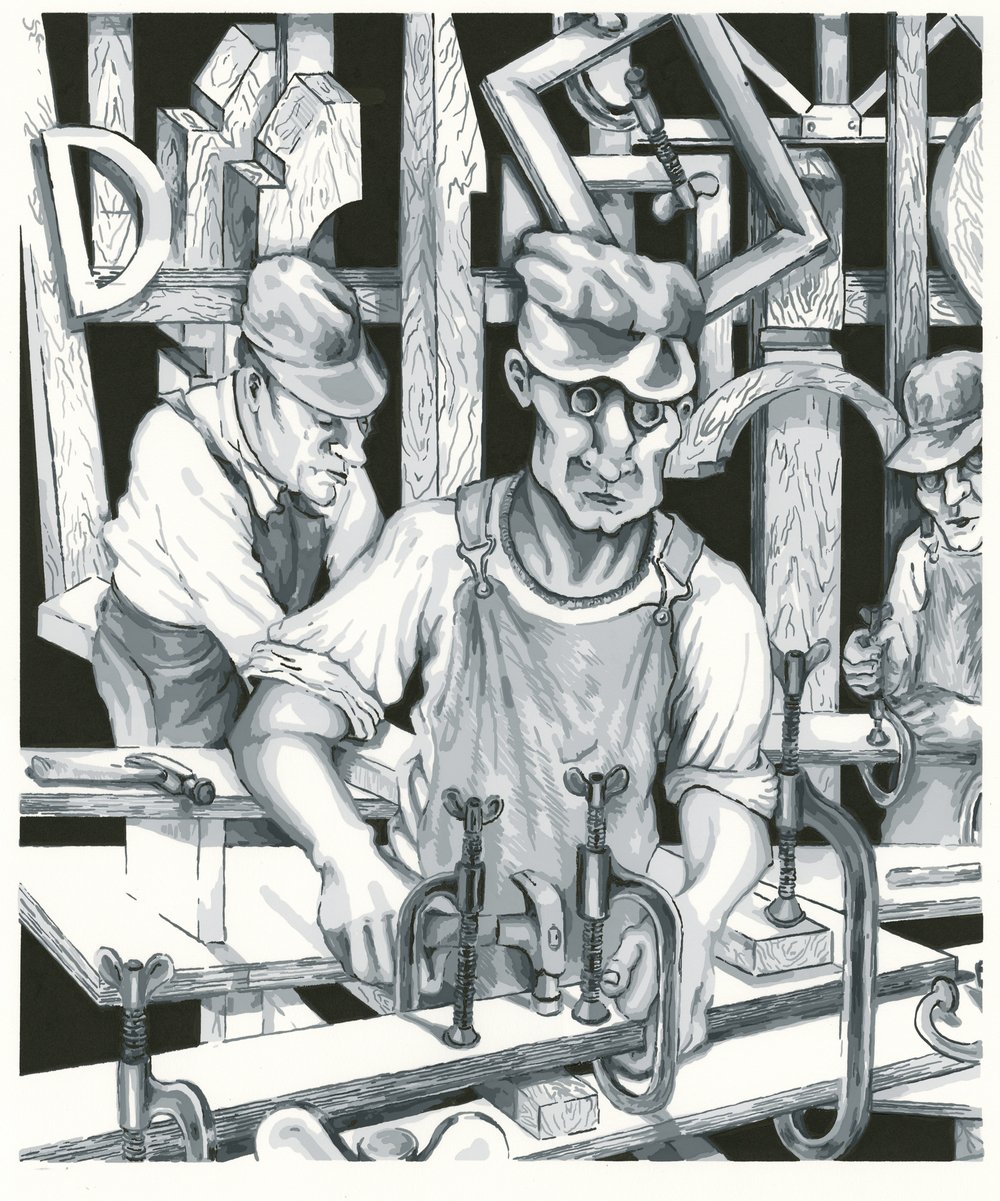
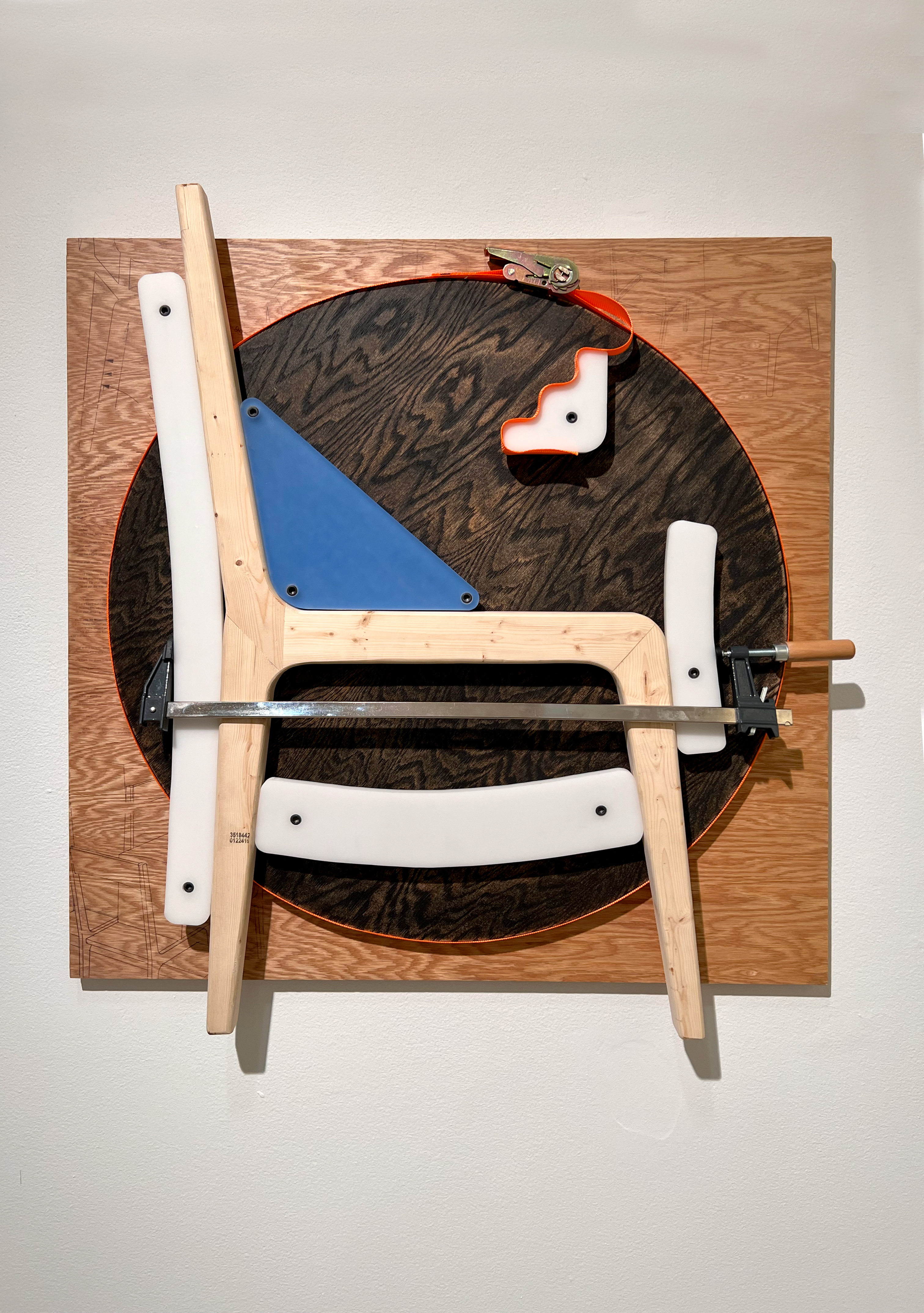
Halima Afi Cassells and Omid Shekari are two artists whose work contemplates the determination of value in relation to policy and oppression. Cassells’ Afro-Futurist collages imagine the prosperity that could be available in a world free of economic hierarchies. Shekari’s three-dimensional and two-dimensional works explore the physical and psychological structures and ways they are employed to maintain control within a society. While Cassells calls upon agency and prosperity to dream of a bright future for marginalized communities, Shekari presents reveries that emphasize their ongoing nightmares.
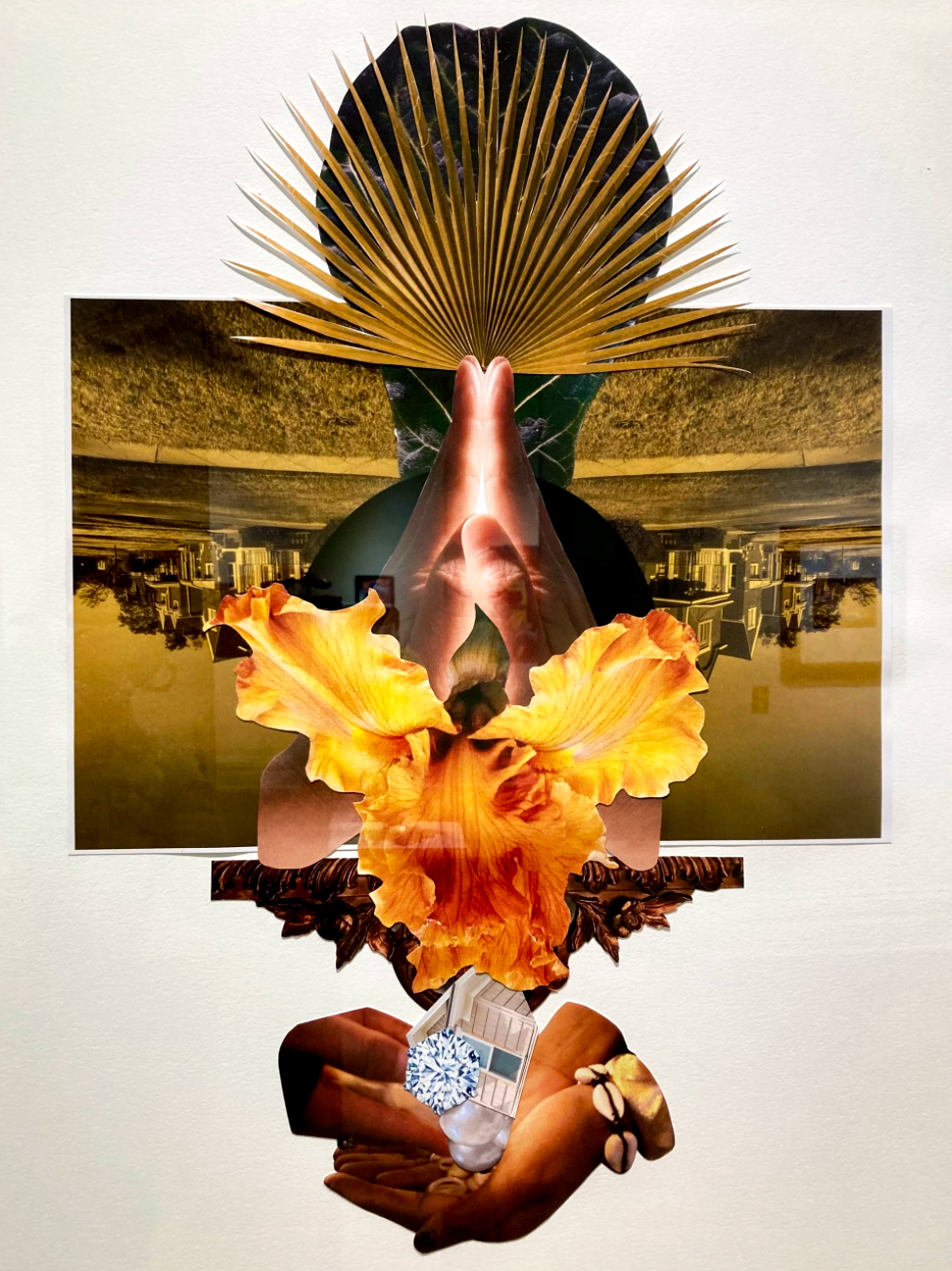
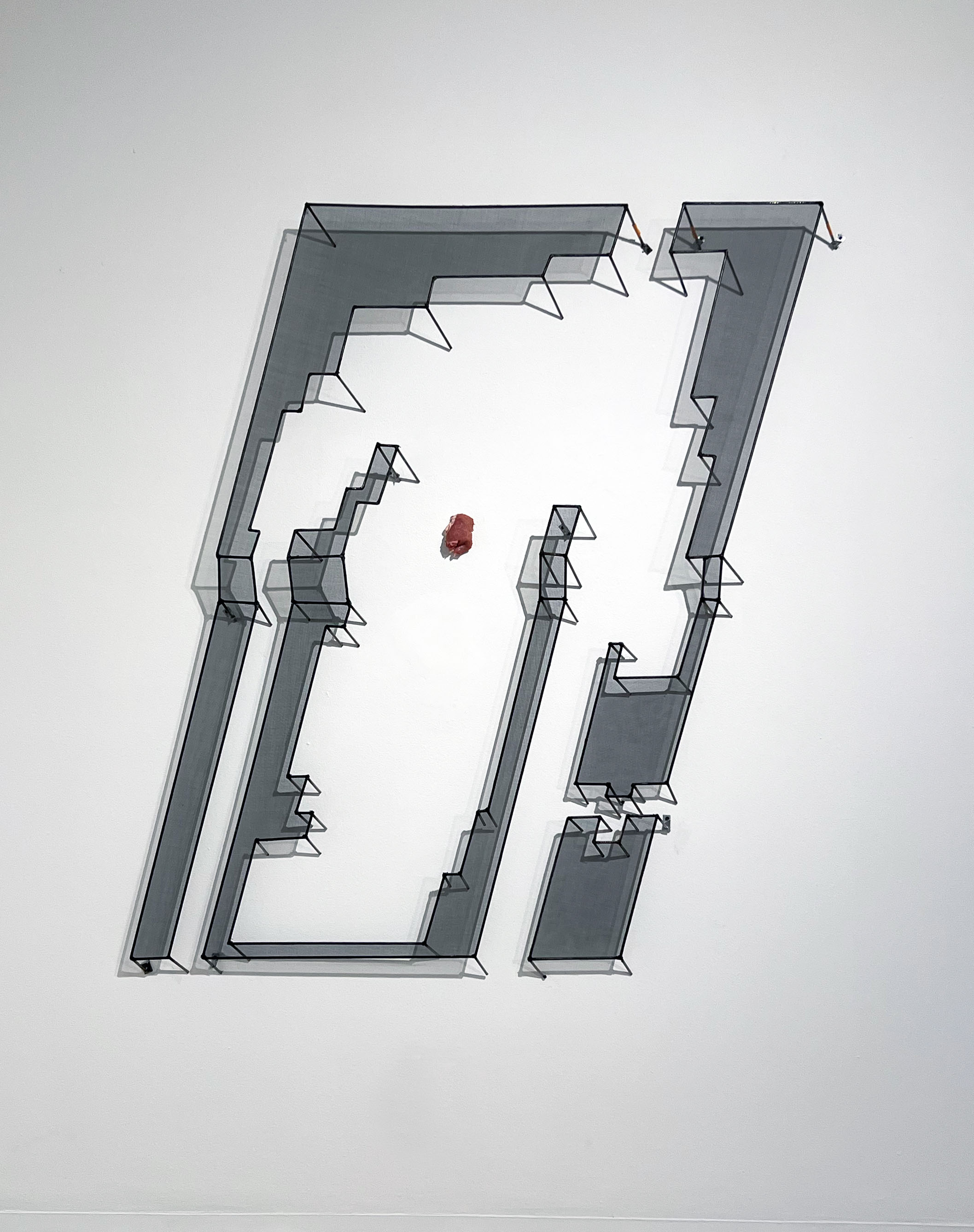
Kemuel Benyehudah is a Brooklyn-born curator currently living between Pittsburgh and Detroit. His desire to leave the East Coast for the Midwest was brought on by his frustration with the gentrification that he witnessed in New York City. Topics of cultural erasure, socioeconomic disparities and displacement of primarily marginalized communities have become a focus of his work in recent years, ultimately inspiring his investigation into the history of America’s Midwest.
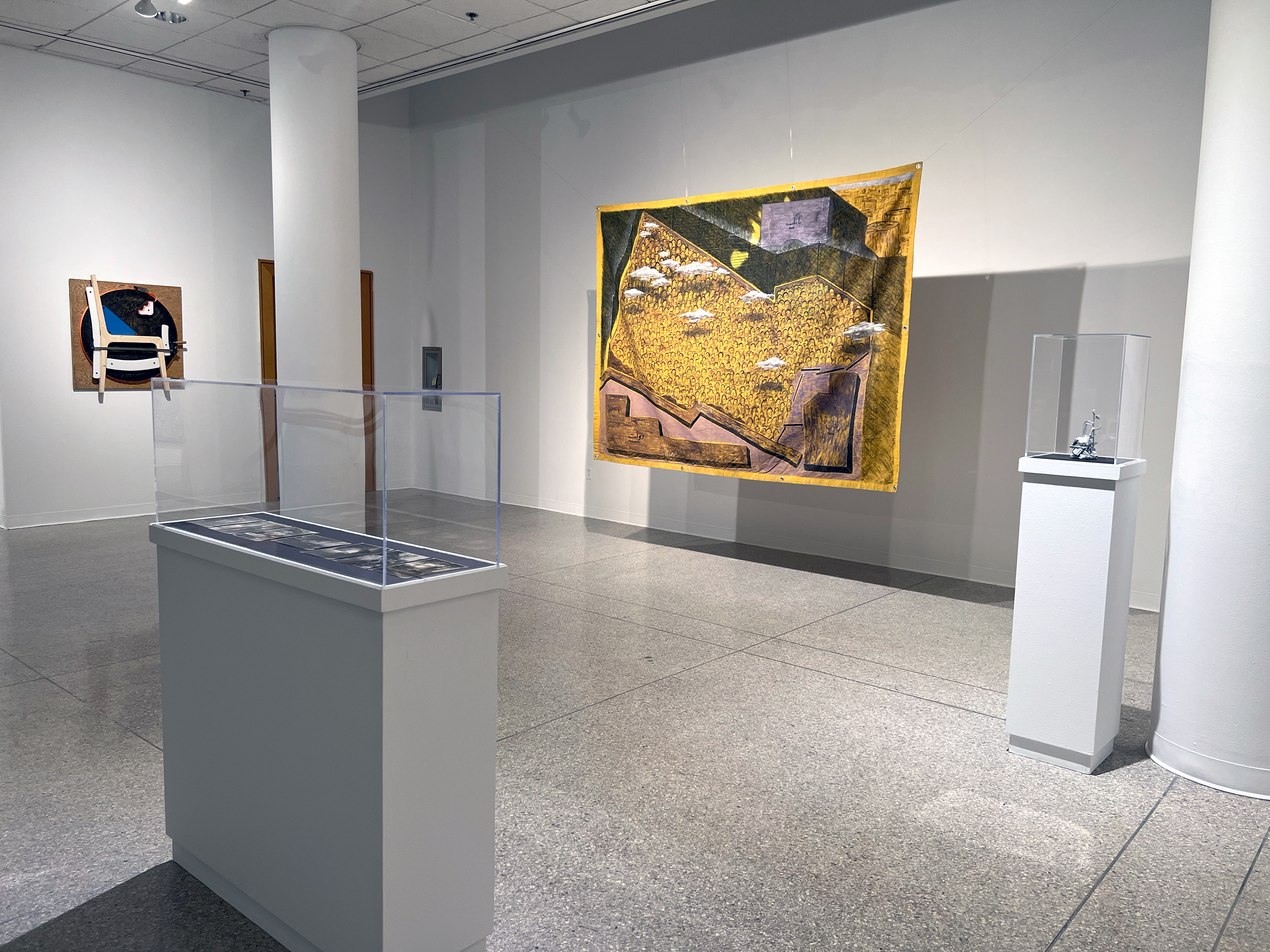
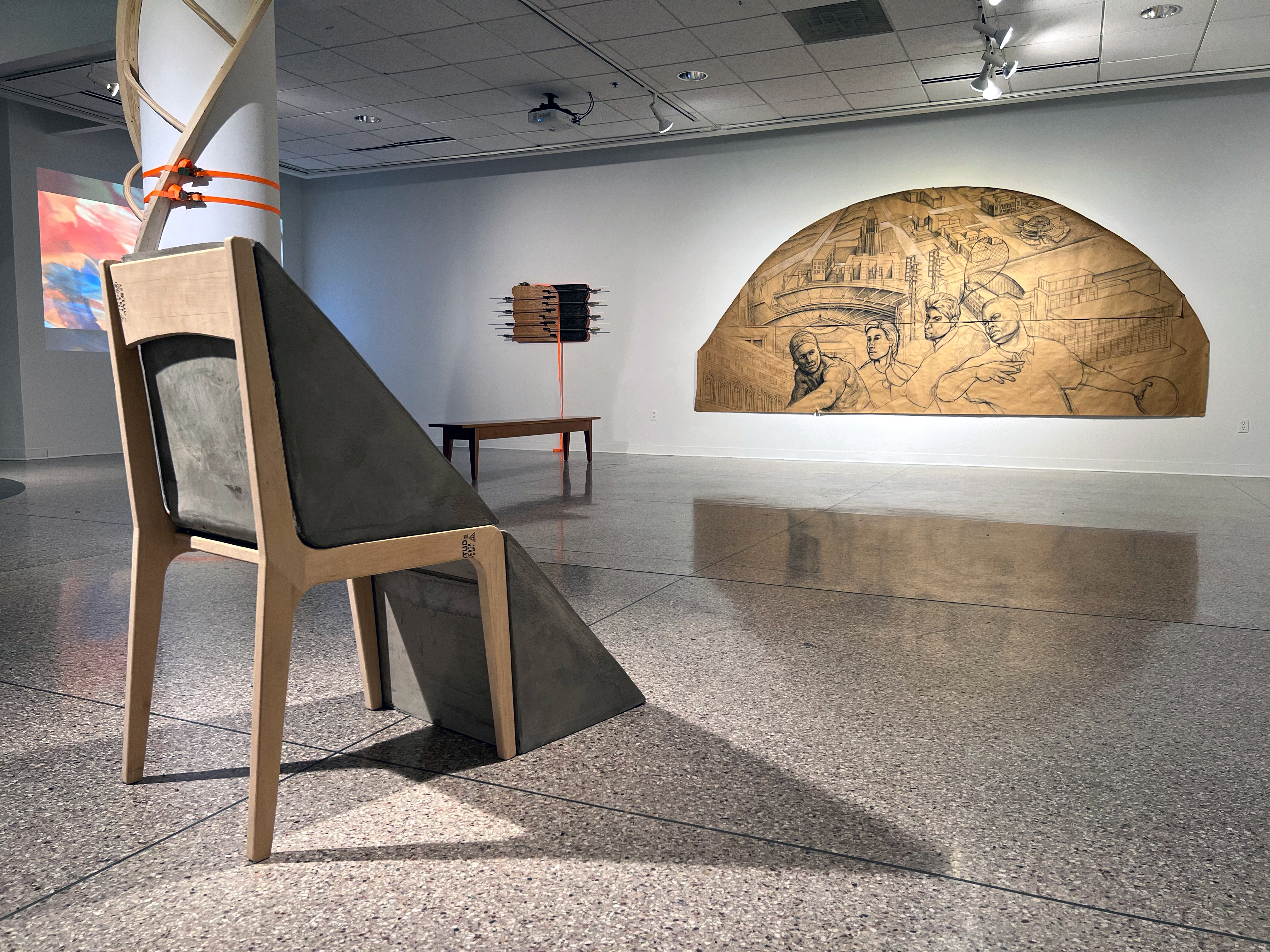
Echoes from the Rust opened on October 18, 2024 and is on view through January 11, 2025.
Elaine Jacobs Gallery
4841 Cass
Detroit, MI 48202
www.waynestategalleries.org/elaine-l-jacob-gallery
1. Moslimani, Mohamad. “What the Data Says about Immigrants in the U.S.” Pew Research Center, September 27, 2024. https://www.pewresearch.org/short-reads/2024/09/27/key-findings-about-us-immigrants/
Images courtesy of Wayne State University